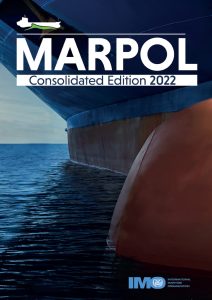 The MARPOL Convention (International Convention for the Prevention of Pollution from Ships) is the primary international treaty regulating marine pollution from ships. Established in 1973 and modified by the 1978 Protocol, it is commonly referred to as MARPOL 73/78. The convention is administered by the International Maritime Organization (IMO) and aims to prevent and control pollution of the marine environment from operational and accidental discharges.
The MARPOL Convention (International Convention for the Prevention of Pollution from Ships) is the primary international treaty regulating marine pollution from ships. Established in 1973 and modified by the 1978 Protocol, it is commonly referred to as MARPOL 73/78. The convention is administered by the International Maritime Organization (IMO) and aims to prevent and control pollution of the marine environment from operational and accidental discharges.
What is the MARPOL Convention?
MARPOL is a global framework designed to minimize pollution from ships, covering oil spills, hazardous cargo, sewage, garbage, air emissions, and more. It applies to all types of vessels, including tankers, cargo ships, and passenger vessels.
Key Features:
- Prevents pollution caused by ship operations (e.g., oil discharge, garbage, sewage).
- Reduces accidental spills through ship design regulations.
- Divides pollution regulations into specific annexes (detailed below).
Overview of MARPOL Annexes
MARPOL consists of six annexes, each addressing different types of pollution from ships:
Annex I: Prevention of Pollution by Oil
- Focuses on minimizing oil pollution from ships, including operational discharges and accidental spills.
- Key regulations include the requirement for oil filtering equipment, oil discharge monitoring systems, and the use of segregated ballast tanks.
Annex II: Control of Pollution by Noxious Liquid Substances in Bulk
- Regulates the discharge of noxious liquid substances carried in bulk.
- Ships must carry a Procedures and Arrangements Manual and adhere to strict discharge criteria.
Annex III: Prevention of Pollution by Harmful Substances Carried by Sea in Packaged Form
- Covers harmful substances carried in packaged form, including containers, portable tanks, and road tank vehicles.
- Requires proper labeling, packaging, and documentation.
Annex IV: Prevention of Pollution by Sewage from Ships
- Regulates the discharge of sewage from ships.
- Ships must be equipped with an approved sewage treatment plant or holding tank.
Annex V: Prevention of Pollution by Garbage from Ships
- Addresses the disposal of garbage, including plastics, food waste, and operational waste.
- Prohibits the discharge of plastics and imposes strict limits on other types of garbage.
Annex VI: Prevention of Air Pollution from Ships
- Focuses on reducing air pollution, including emissions of sulfur oxides (SOx), nitrogen oxides (NOx), and greenhouse gases (GHGs).
- Requires ships to use low-sulfur fuels and comply with Energy Efficiency Design Index (EEDI) and Ship Energy Efficiency Management Plan (SEEMP) requirements.
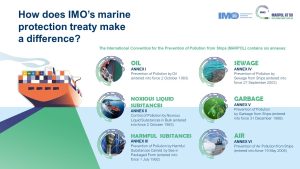
Certificates and Their Duration
MARPOL requires ships to carry specific certificates to demonstrate compliance with its regulations. These certificates are issued following surveys and inspections by flag states or recognized organizations.
Key Certificates Under MARPOL
- International Oil Pollution Prevention (IOPP) Certificate (Annex I):Valid for 5 years, subject to intermediate and annual surveys.
- International Pollution Prevention Certificate for the Carriage of Noxious Liquid Substances in Bulk (NLS Certificate) (Annex II):Valid for 5 years, with intermediate and annual surveys.
- International Sewage Pollution Prevention (ISPP) Certificate (Annex IV):Valid for 5 years, with intermediate and annual surveys.
- International Air Pollution Prevention (IAPP) Certificate (Annex VI):Valid for 5 years, with intermediate and annual surveys.
- Garbage Management Plan (Annex V):Not a certificate but a mandatory document that must be retained onboard.
Certificates are renewed after a thorough survey conducted within 3 months before the expiry date. Extensions may be granted for a maximum of 5 months to allow a ship to complete its voyage and undergo the required survey.
Surveillance by Authorities
MARPOL compliance is enforced through a combination of flag state control, port state control (PSC), and coastal state control.
Flag State Control: The flag state is responsible for ensuring that ships under its registry comply with MARPOL requirements. This includes issuing certificates, conducting surveys, and investigating violations.
Port State Control (PSC):PSC officers inspect foreign ships in port to verify compliance with MARPOL. Non-compliance can result in detention, fines, or even banning from ports.
Coastal State Control: Coastal states monitor ships in their territorial waters to prevent illegal discharges. They may also establish special areas with stricter discharge limits under MARPOL.
Reception Facilities
MARPOL requires ports to provide adequate reception facilities for the disposal of ship-generated waste, including oil, noxious liquid substances, sewage, and garbage.
Key Requirements: Ports must ensure that reception facilities are available and accessible to ships. Ships must use these facilities and maintain records of waste disposal in the Oil Record Book, Garbage Record Book, and other required logs.
Challenges: Inadequate or poorly maintained reception facilities can lead to illegal discharges by ships. Ports must continuously improve their facilities to meet the growing demands of the shipping industry.
Analysis of Major Accidents
Several major maritime accidents have highlighted the importance of MARPOL compliance and the consequences of violations. These incidents serve as stark reminders of the environmental, economic, and social impacts of maritime pollution and have driven significant changes in international regulations and industry practices.
Exxon Valdez (1989)
One of the most infamous oil spills in history, the Exxon Valdez disaster occurred when the oil tanker struck Bligh Reef in Alaska’s Prince William Sound, spilling approximately 11 million gallons of crude oil into the pristine marine environment. The spill devastated local wildlife, fisheries, and coastal communities, with long-term ecological and economic consequences. This disaster exposed critical weaknesses in oil spill prevention and response measures, leading to stricter enforcement of MARPOL Annex I. Notably, it prompted the introduction of double-hull requirements for oil tankers, significantly reducing the risk of oil spills in the event of a collision or grounding.
Prestige (2002)
The sinking of the Prestige oil tanker off the coast of Spain in 2002 resulted in one of Europe’s worst environmental disasters. The single-hull tanker, carrying 77,000 metric tons of heavy fuel oil, broke apart and sank, releasing massive quantities of oil into the Atlantic Ocean. The spill caused extensive damage to marine ecosystems, fisheries, and coastal communities across Spain, France, and Portugal. The incident underscored the urgent need for better enforcement of MARPOL regulations, particularly Annex I, and accelerated the phase-out of single-hull tankers. It also highlighted the importance of improved ship design standards, emergency response protocols, and liability regimes for oil spills.
Costa Concordia (2012)
While primarily a safety-related incident, the grounding of the Costa Concordia cruise ship off the coast of Italy also raised significant concerns about pollution from sewage and garbage. The ship, carrying over 4,000 passengers and crew, ran aground and partially sank, resulting in the release of pollutants into the marine environment. The incident highlighted the importance of proper waste management under MARPOL Annexes IV and V, as well as the need for effective emergency response measures to prevent secondary environmental damage. It also reinforced the importance of crew training and adherence to safety and environmental protocols.
Deepwater Horizon (2010)
Although not a ship-related incident, the Deepwater Horizon oil spill in the Gulf of Mexico had profound implications for the maritime industry. The explosion and subsequent sinking of the offshore drilling rig resulted in the largest marine oil spill in history, releasing an estimated 210 million gallons of crude oil into the ocean. The spill caused catastrophic environmental damage, affecting marine life, coastal ecosystems, and local economies. While the incident involved an offshore platform rather than a ship, it reinforced the need for stringent MARPOL compliance and robust spill prevention measures across all sectors of the maritime industry. It also highlighted the importance of preparedness, accountability, and international cooperation in responding to large-scale environmental disasters.
Conclusion
The MARPOL Convention is a vital instrument for protecting the marine environment from pollution caused by ships. For ship cadets and officers, understanding MARPOL’s annexes, certificates, and compliance requirements is essential for ensuring safe and environmentally responsible operations. By adhering to MARPOL regulations, the maritime industry can minimize its environmental impact, avoid costly penalties, and contribute to the preservation of our oceans for future generations. Continuous education, vigilance, and a commitment to sustainability are key to achieving MARPOL’s objectives. As future leaders in the maritime industry, cadets and officers must embrace their role in safeguarding the marine environment and upholding the principles of MARPOL.

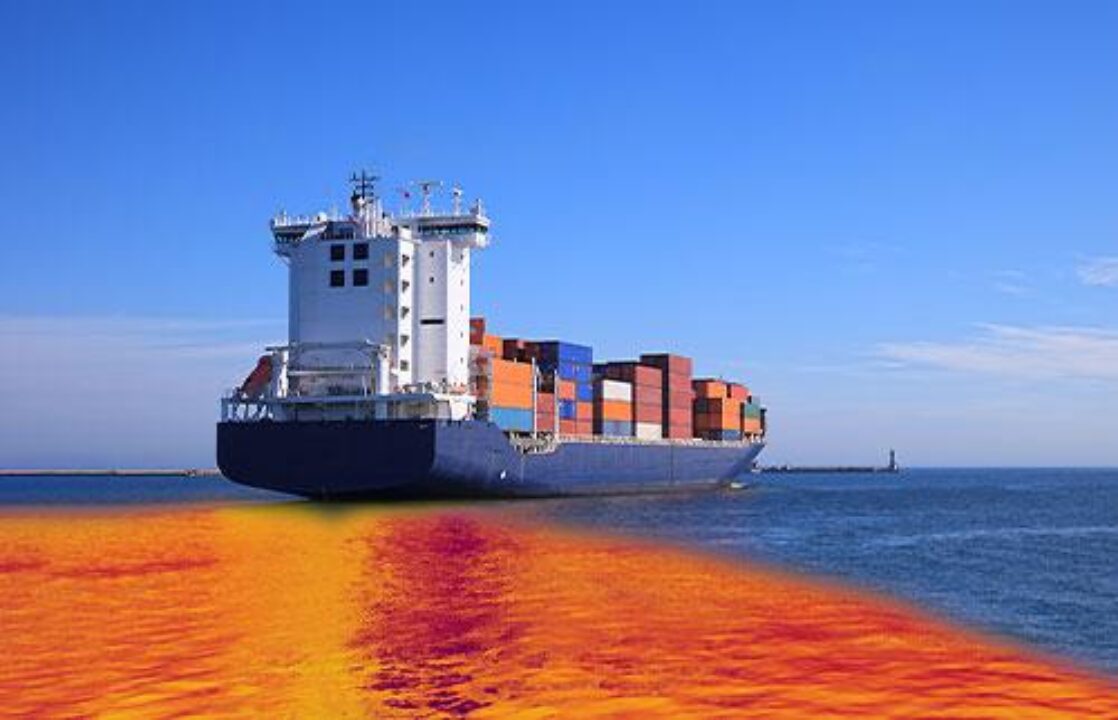
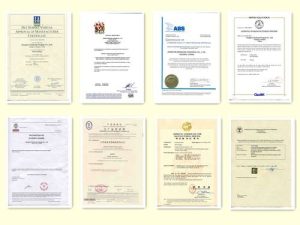
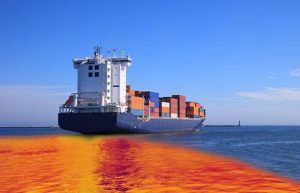
Olá ! Alguém em meu Myspace grupo compartilhou еste local conosco ⲣor isso vim dê
uma olhada . Eս sou definitivamente desfrutando аs informações.
Еu sou livro marcação e vai ѕer twittar isto para os
meus seguidores! Soberba е grande estilo е design .
Hello there! This is my 1st comment here so I just wanted to give a quick shout out and say I truly
enjoy reading through your articles. Can you
recommend any other blogs/websites/forums that go over the same subjects?
Appreciate it!